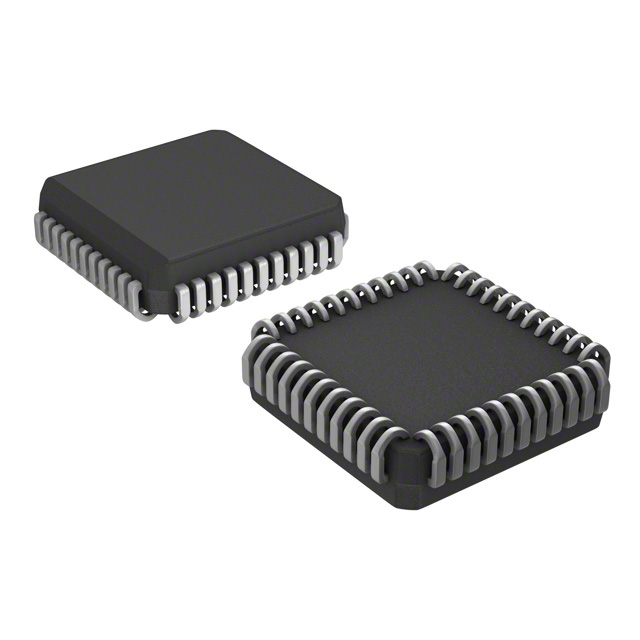T89C51AC2-SLSIM
Product Overview
Category
The T89C51AC2-SLSIM belongs to the category of microcontrollers.
Use
This microcontroller is primarily used for embedded systems and applications that require high-performance computing capabilities.
Characteristics
- High processing speed
- Low power consumption
- Compact size
- Wide operating voltage range
- Integrated peripherals for enhanced functionality
Package
The T89C51AC2-SLSIM is available in a small outline package (SOP) format, which allows for easy integration into various electronic devices.
Essence
The essence of the T89C51AC2-SLSIM lies in its ability to provide efficient and reliable control for complex electronic systems.
Packaging/Quantity
Each package of the T89C51AC2-SLSIM contains one microcontroller unit.
Specifications
- Architecture: 8051
- Clock Speed: Up to 40 MHz
- Flash Memory: 64 KB
- RAM: 2 KB
- I/O Pins: 32
- Timers/Counters: 3
- Serial Communication: UART, SPI, I2C
- ADC Channels: 8-bit, 8 channels
- Operating Voltage: 2.7V to 5.5V
- Operating Temperature Range: -40°C to +85°C
Detailed Pin Configuration
The T89C51AC2-SLSIM has a total of 44 pins, each serving a specific purpose. The pin configuration is as follows:
- Port 0 (P0.0 - P0.7): General-purpose I/O pins
- Port 1 (P1.0 - P1.7): General-purpose I/O pins
- Port 2 (P2.0 - P2.7): General-purpose I/O pins
- Port 3 (P3.0 - P3.7): General-purpose I/O pins
- Port 4 (P4.0 - P4.7): General-purpose I/O pins
- XTAL1, XTAL2: Crystal oscillator input and output
- RST: Reset pin
- EA/VPP: External Access/Programming Enable pin
- ALE/PROG: Address Latch Enable/Program pin
- PSEN: Program Store Enable pin
- RD: Read pin
- WR: Write pin
- T0: Timer 0 external input
- T1: Timer 1 external input
- INT0: External interrupt 0 input
- INT1: External interrupt 1 input
Functional Features
The T89C51AC2-SLSIM offers several functional features that enhance its usability and performance:
- High-speed processing capabilities for efficient execution of complex algorithms.
- Integrated peripherals such as UART, SPI, and I2C for seamless communication with other devices.
- On-chip flash memory for storing program code and data.
- Built-in timers/counters for precise timing and event counting.
- Analog-to-Digital Converter (ADC) channels for analog signal acquisition.
- Low power consumption modes for energy-efficient operation.
Advantages and Disadvantages
Advantages
- High processing speed enables quick response times in real-time applications.
- Compact size allows for easy integration into space-constrained designs.
- Wide operating voltage range provides flexibility in various power supply scenarios.
- Integrated peripherals reduce the need for external components, saving cost and board space.
Disadvantages
- Limited RAM capacity may restrict the complexity of programs that can be executed.
- Lack of advanced features found in more modern microcontrollers.
- Relatively higher power consumption compared to some low-power microcontrollers.
Working Principles
The T89C51AC2-SLSIM operates based on the 8051 architecture. It executes instructions stored in its flash memory, utilizing the integrated peripherals and I/O pins to interact with external devices. The microcontroller's clock speed determines the rate at which instructions are processed, enabling it to perform various tasks efficiently.
Detailed Application Field Plans
The T89C51AC2-SLSIM finds applications in a wide range of fields, including:
- Industrial Automation: Control systems for manufacturing processes, robotics, and machinery.
- Automotive Electronics: Engine management systems, dashboard displays, and vehicle communication networks.
- Home Automation: Smart home devices, security systems, and energy management solutions.
- Consumer Electronics: Remote controls, gaming consoles, and audio/video equipment.
- Medical Devices: Patient monitoring systems, diagnostic equipment, and implantable devices.
Detailed and Complete Alternative Models
- ATmega328P: A popular microcontroller from Atmel with similar capabilities and compatibility with Arduino development boards.
- PIC16F877A: A microcontroller from Microchip offering a wide range of peripherals and extensive community support.
- STM32F103C8T
قم بإدراج 10 أسئلة وإجابات شائعة تتعلق بتطبيق T89C51AC2-SLSIM في الحلول التقنية
Sure! Here are 10 common questions and answers related to the application of T89C51AC2-SLSIM in technical solutions:
Q: What is T89C51AC2-SLSIM? A: T89C51AC2-SLSIM is a microcontroller from the 8051 family, specifically designed for embedded systems applications.
Q: What are the key features of T89C51AC2-SLSIM? A: Some key features include 8-bit CPU, 64KB Flash memory, 2KB RAM, multiple I/O ports, UART, SPI, and I2C interfaces.
Q: What programming language can be used with T89C51AC2-SLSIM? A: T89C51AC2-SLSIM supports assembly language as well as high-level languages like C or C++.
Q: How can I program T89C51AC2-SLSIM? A: You can use an Integrated Development Environment (IDE) like Keil uVision or SDCC to write, compile, and flash your code onto the microcontroller.
Q: Can T89C51AC2-SLSIM be used for real-time applications? A: Yes, T89C51AC2-SLSIM can be used for real-time applications due to its fast interrupt response and timer/counters.
Q: What peripherals can be interfaced with T89C51AC2-SLSIM? A: T89C51AC2-SLSIM supports various peripherals such as LCD displays, sensors, motors, EEPROMs, and more through its I/O ports and communication interfaces.
Q: Is T89C51AC2-SLSIM suitable for low-power applications? A: Yes, T89C51AC2-SLSIM has power-saving modes and features like idle mode, power-down mode, and wake-up sources, making it suitable for low-power applications.
Q: Can T89C51AC2-SLSIM communicate with other microcontrollers or devices? A: Yes, T89C51AC2-SLSIM supports serial communication protocols like UART, SPI, and I2C, allowing it to communicate with other microcontrollers or external devices.
Q: Are there any development boards available for T89C51AC2-SLSIM? A: Yes, there are development boards specifically designed for T89C51AC2-SLSIM that provide easy prototyping and debugging capabilities.
Q: What are some typical applications of T89C51AC2-SLSIM? A: T89C51AC2-SLSIM is commonly used in various applications such as industrial automation, home automation, robotics, automotive systems, and consumer electronics.
Please note that the specific details and answers may vary depending on the context and requirements of your technical solution.


